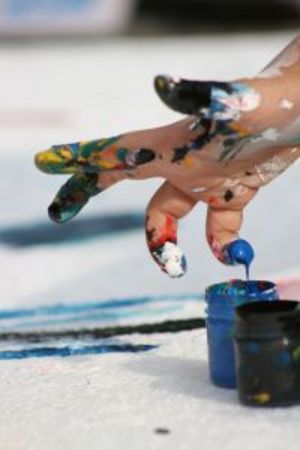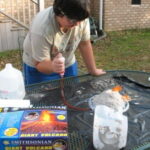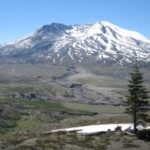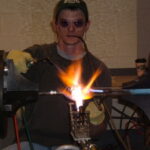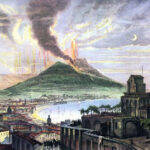Choose a theme to guide the activity. Offer the children options but make certain that all of the choices are within the guidelines for the theme. If the art activity coincides with the science lesson, the children can easily use their creative minds to express themselves while learning a scientific method or fact. For example, allow the kids to choose from various materials to draw and create an image of a volcano after learning about eruptions in a science lesson. Match the theme to incorporate both art and science together and keep the knowledge fresh in the kids’ minds.
If the sole purpose of the art lesson is expression, offer the children free reign over the materials. However, if the desired outcome is a correlation between the art and science lessons it is necessary to choose specific materials that suit the idea. For example, a science lesson about the differences between man-made and natural materials is easily reinforced by offering an assortment of art items representing each category. Present plastic beads, pieces of paper, foil and leaves and have the children make collages depicting either man-made or natural items. Natural materials that are man-made, such as paper, provide opportunity for discussion.
Landscapes offer the perfect opportunity for artistic interpretations of science lessons. Provide children with scientific explanations of the various landscapes as well as art materials necessary to recreate them. Paint with glue then sprinkle colored sand for beautiful desert scenes while teaching about desert life. Small pieces of paper and gluesticks are ideal for creating mosaic underwater scenes during talks about the ocean. Large pictures as well as lessons about the natural environment spark creativity and give the children the knowledge necessary for making their own renditions of the images.
Learning about the solar system and extended universe is easy when children simultaneously construct coordinating art projects. Paper planet mobiles are fun to paint and create while serving as a reminder of the order of the planets. Give the kids white chalk to draw on black paper to recreate constellations, or use small foil star stickers. Science lessons about cause and effect also give way to enjoyable art activities. Mix water and dry plaster mix to create an endless array of projects from planet paperweights to sun and moon garden stones. The kids can also learn about evaporation and the science of the drying process as they wait for their celestial creations to harden.
Nature projects are a very educational and fun way to combine art and science. After an indoor lesson about the environment is finished, take the children into the yard to hunt for natural materials. Glue items collected by the kids such as leaves or twigs onto cardboard to create a scrapbook of the lesson. Leaves laid under paper and rubbed with crayon or chalk produce rubbings to be labeled and classified during science class. Microscopes also provide excellent pieces of artwork. Trace images projected from the microscope onto paper and color with watercolors or colored pencils. Large rocks brought in from home as part of an assignment can be painted after a discussion about their origins is completed.
Sources:
http://www.eric.ed.gov/ERICWebPortal/custom/portlets/recordDetails/detailmini.jsp?_nfpb=true&_&ERICExtSearch;_SearchValue_0=ED404146&ERICExtSearch;_SearchType_0=no&accno;=ED404146
http://www.artic.edu/aic/education/sciarttech/2d3.html
http://www.acornnaturalists.com/store/Teaching-Science-through-Art-C41.aspx
